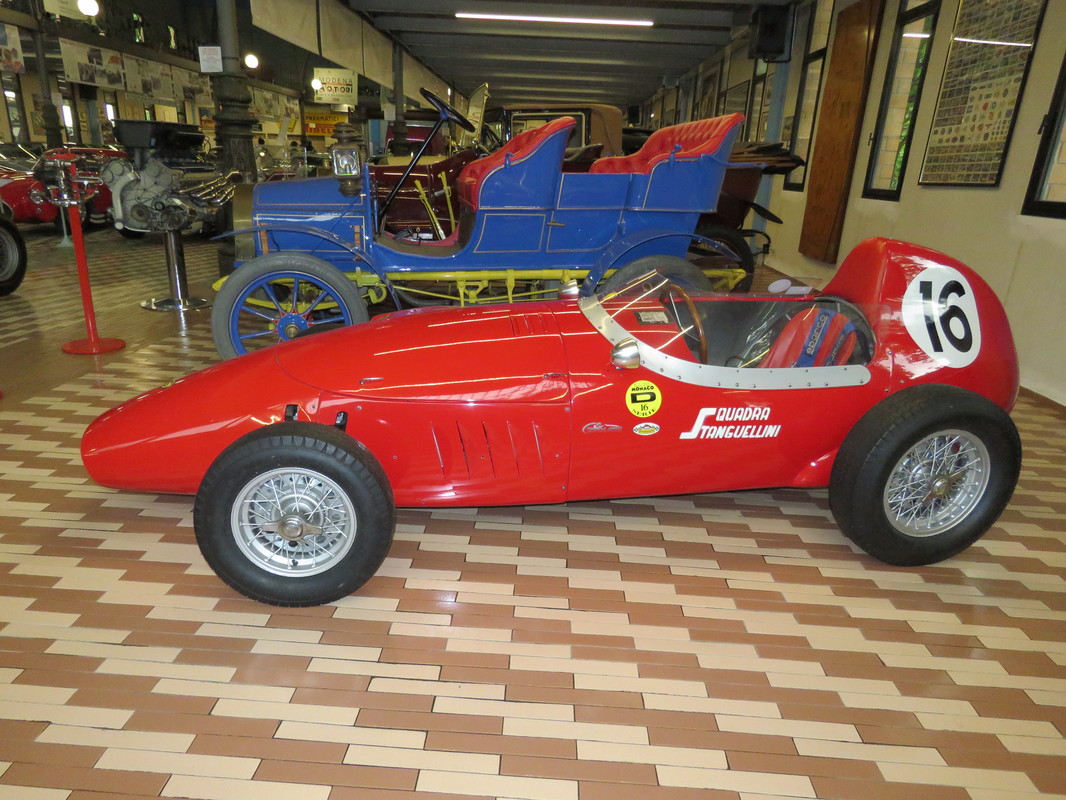None Stanguellini Formula Junior

The descriptions of the Classic Cars in the Directory were partly generated or supplemented with the help of artificial intelligence (AI). The content may occasionally not always be entirely accurate or factually correct despite careful checking.
The Stanguellini Formula Junior is a single-seater open-wheel car designed specifically for racing in the Formula Junior category. The Formula Junior class was introduced in the late 1950s as a stepping-stone for young drivers seeking a career in Formula One. The Stanguellini Formula Junior was produced from 1958 to 1963 and was powered by a variety of engines ranging from Fiat to Alfa Romeo to OSCA.
The Chassis The Stanguellini Formula Junior utilizes a tubular space frame chassis, which is designed to provide exceptional strength and rigidity while keeping weight to a minimum. The chassis is constructed from high-grade steel tubing, which is welded together to form a sturdy structure that can withstand the immense forces generated during high-speed cornering.
Suspension The suspension system of the Stanguellini Formula Junior is a double-wishbone setup. The wishbones are made from lightweight aluminum and are designed to provide a balance between stiffness and flexibility. The suspension also features adjustable shock absorbers, which can be tuned to suit the specific requirements of different circuits and driving styles.
Brakes The Stanguellini Formula Junior is equipped with disc brakes on all four wheels. The brake discs are ventilated to prevent overheating, and the calipers are of the four-piston type, which provide exceptional stopping power.
Engine The engine is mounted behind the driver and is designed to provide maximum power while keeping weight to a minimum. The most common engine used in the Stanguellini Formula Junior was the Fiat 1100cc unit, which was modified to produce around 100 horsepower. The engine was mated to a four-speed manual gearbox, which was operated via a floor-mounted shifter.
Wheels and Tires The wheels of the Stanguellini Formula Junior were of the wire-spoked variety, which were wrapped in narrow racing tires. The tires were specially designed to provide maximum grip on the track surface while also providing great feedback to the driver.
Performance The Stanguellini Formula Junior was capable of reaching speeds of up to 135 miles per hour and could accelerate from 0 to 60 miles per hour in just over five seconds. The car's nimble handling and responsive chassis made it a favorite among drivers, and it continued to be a dominant force in the Formula Junior category throughout its production run.
In conclusion, the Stanguellini Formula Junior is a compact yet powerful racing car that was designed to provide young drivers with a platform to showcase their talents. With its lightweight chassis, powerful engine, and nimble handling, the Stanguellini Formula Junior remains a favorite among vintage racing enthusiasts today.
Milestones
As an AI language model, I don't have personal experience, but here are some key milestones of Stanguellini Formula Junior:- Stanguellini founded in 1919 by Vittorio Stanguellini
- Stanguellini Formula Junior released in 1957
- First car produced was the Stanguellini Formula Junior, featuring a FIAT engine
- 1958 - Drivers Enzo Almenara and Giancarlo Sala piloted Stanguellini Formula Junior cars to wins in several important races
- 1959 - Stanguellini and Abarth teamed up to produce a larger and more powerful version of the Formula Junior car with a new DOHC engine
- 1960 - Stanguellini Formula Junior won the 1000 km Nürburgring
- 1961 - Stanguellini decided to cease Formula Junior production and focus on building engines and smaller sports cars.
Technical
- The Stanguellini Formula Junior was a single-seat racing car designed for Formula Junior racing events.